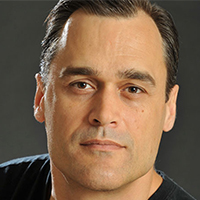
“Germanwings Co-Pilot Intentionally Crashed Plane,” reads the headline in Foreign Policy this morning. There are lots more like it in media outlets around the world. But is it true?
That conclusion is based on a statement by the lead crash investigator, who said, based on evidence gathered mostly from voice recordings, “the most plausible interpretation is that the co-pilot through a voluntary act had refused to open the cabin door to let the captain in…. He pushed the button to trigger the aircraft to lose altitude. He operated this button for a reason we don’t know yet, but it appears that the reason was to destroy the plane.”
Crash investigators are notoriously cautious, as they must be. For the investigator to say this, so soon into the investigation, there must be considerable evidence. But does this mean, as the headlines say, that the co-pilot intentionally crashed the plane?
No. It means that explanation is the strongest fit with the evidence available at this time. No more. What the media have done is take an appropriately uncertain conclusion — “the most plausible interpretation” — and turned it into a certainty.
That’s a very human thing to do. As stacks of psychology demonstrate, we tend to be averse to uncertainty. We also rush to judgement. And so, when confronted with uncertainty — why did this horrible thing happen? — we look hard for an explanation and when we find one that is plausible we treat it as conclusive rather than a hypothesis that needs to be further explored. Remember the bombing and massacre committed by Anders Breivik? It was widely believed when news broke that it was a coordinated attack by multiple Islamist terrorists because that explanation was, given the facts, quite plausible. But it was also possible, if less plausible, that the attacks were the work of one anti-Muslim fanatic.
The implicated co-pilot has been named. Imagine what his family must be feeling. Now imagine what his family will feel if he is cleared months from now.
Of course, given the facts as they exist now, the most probable outcome of the investigation is the one suspected. But that is not certain. People often dislike terms like “may” and “possible” and “plausible” but they are essential qualifiers in a world riddled with uncertainty. If we are to avoid deluding ourselves and believing we know more than we do we must use them.









